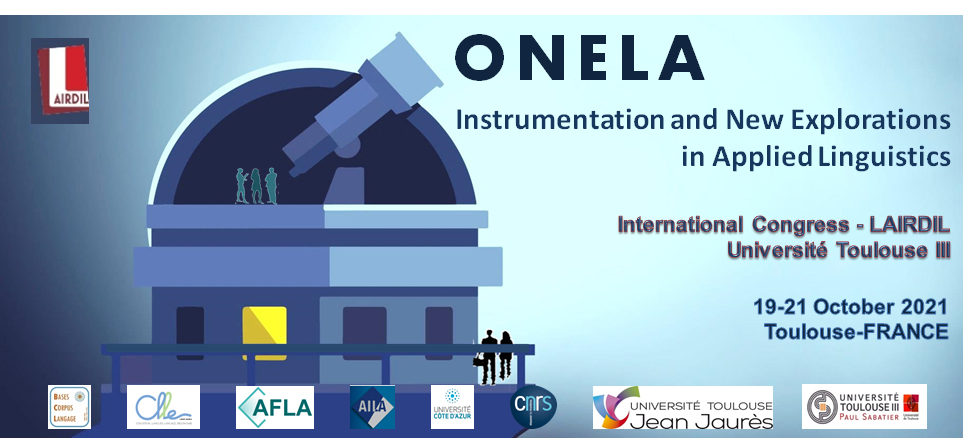Bibliographie
Breen, M. (1987). Learner contribution to the task design. In C. N. Candlin & D. Murphy (Eds.),
Language learning tasks (Vol. 7, pp. 23–46). London: Prentice-Hall International.
Cutrim Schmid, E. & Cvetkovic, A. 2016, Digitale Medien im Englischunterricht der Grundschule. In: Peschel, M. & Irion, T. (Ed) Neue Medien in der Grundschule 2.0. Frankfurt: Grundschulverband, 178 -188.
Dooly, M., & Sadler, R., 2016. Becoming little scientists: technologically-enhanced project-based language learning. Language Learning & Technology, 20(1), 54-78.
Ellis, R. 2013, Task-based language teaching: responding to the critics. University of Sydney Papers in TESOL, 8, 1-27.
Elsner, D. (2014). Multilingual Virtual Talking Books (MuViT) – A Project to Foster
Multilingualism, Language Awareness, and Media Competency. In D. AbendrothTimmer,
& E.-M. Hennig (Eds.), Plurilingualism and Multiliteracies. International Research on Identity Construction in Language Education. Frankfurt/M.: Peter Lang, 175-190.
Erlam, R. (2016). ‘I’m still not sure what a task is’: Teachers designing language tasks. Language Teaching Research, 20(3), 279-299.
Fullan, M. (2001). Leading in a Culture of Change, San Francisco, CA: Jossey-Bass.
Mackey, A., & Gass, S. M. (2015). Second language research: Methodology and design. Routledge.
Gimeno-Sanz, A. (2016). Moving a step further from “integrative CALL”. What’s to come?. Computer Assisted Language Learning, 29(6), 1102-1115.
Gruson, B.,2011, Analyse comparative d’une situation de communication orale en classe ordinaire et lors d’une séance en visioconférence, Distances et Savoirs, 8/3: 395-423.
Jauregi Ondarra, K., Gruber, A., & Canto, S. (2020). When International Avatars Meet–Intercultural Language Learning in Virtual Reality Exchange. Research-publishing. net.
Kim, Y. (2017). Cognitive-interactionist approaches to L2 instruction. In The Routledge handbook of instructed second language acquisition (pp. 126-145). Routledge.
Long, M. H. (1996). Authenticity and learning potential in L2 classroom discourse. University of Hawai’i Working Papers in English as a Second Language 14 (2).
Long, M. H. (1980). Input, interaction, and second language acquisition. Unpublished PhD dissertation, University of California, Los Angeles.
Macrory, G., Chrétien, L. and Ortega-Martín, J. L. 2012, Technologically enhanced language learning in primary schools in England, France and Spain: developing linguistic competence in a technologically enhanced classroom environment, Education 3 – 13: International Journal of Primary, Elementary and Early Years Education, 40(4), .433 – 444.
Milton, J., & Garbi, A. 2000, VIRLAN: Collaborative foreign language learning on the Internet for primary age children: Problems and a solution. Educational Technology & Society, 3(3), 286-292.
Pritchard, A., Hunt, M., & Barnes, A. 2010, Case study investigation of a videoconferencing experiment in primary schools, teaching modern foreign languages, Language Learning Journal, 209-220.
van der Kroon, L., Jauregi, K., & Jan, D. 2015, Telecollaboration in Foreign Language Curricula: A Case Study on Intercultural Understanding in Video Communication Exchanges. International Journal of Computer-Assisted Language Learning and Teaching (IJCALLT), 5(3), 20-41.
Whyte, S. 2015,
Whyte, S. 2011, Learning to teach with videoconferencing in primary foreign language classrooms. ReCALL 23(3): 271–293.
Whyte, S., & Cutrim Schmid, E. 2017, Synchronous video communication with young EFL learners: a multimodal analysis of task negotiation. Paper presented at AILA, Rio de Janeiro, 23-8 July.
Whyte, S., Schmid, E.C., van Hazebrouck Thompson, S. and Oberhofer, M. 2014, Open educational resources for CALL teacher education: the iTILT interactive whiteboard project. Computer Assisted Language Learning, 27(2), 122-148.
Ziegler, N. 2016, Taking technology to task: Technology-mediated TBLT, performance, and production. Annual Review of Applied Linguistics, 36, 136-163.








